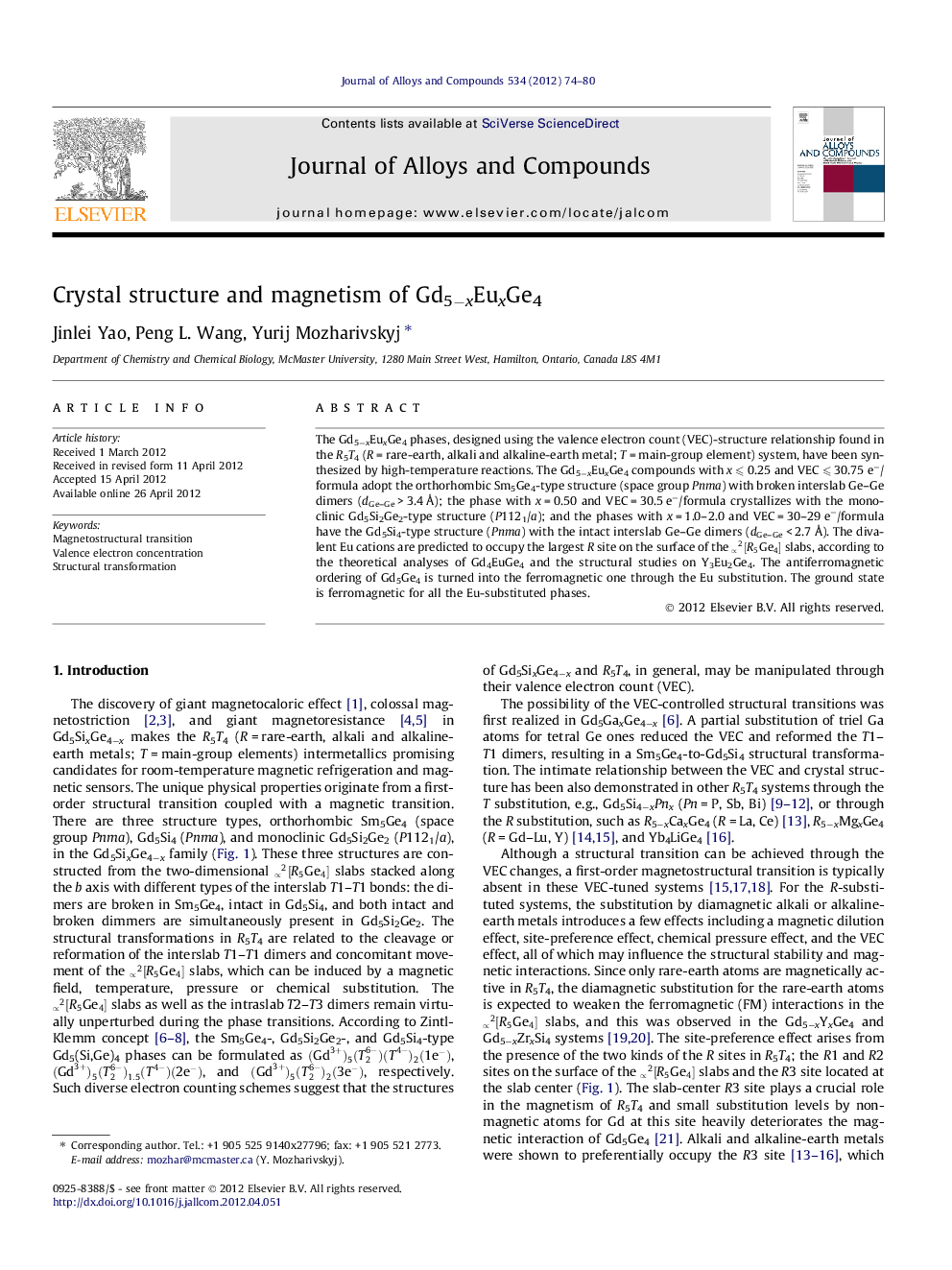| Article ID | Journal | Published Year | Pages | File Type |
|---|---|---|---|---|
| 1615604 | Journal of Alloys and Compounds | 2012 | 7 Pages |
The Gd5−xEuxGe4 phases, designed using the valence electron count (VEC)-structure relationship found in the R5T4 (R = rare-earth, alkali and alkaline-earth metal; T = main-group element) system, have been synthesized by high-temperature reactions. The Gd5−xEuxGe4 compounds with x ≤ 0.25 and VEC ≤ 30.75 e−/formula adopt the orthorhombic Sm5Ge4-type structure (space group Pnma) with broken interslab Ge–Ge dimers (dGe–Ge > 3.4 Å); the phase with x = 0.50 and VEC = 30.5 e−/formula crystallizes with the monoclinic Gd5Si2Ge2-type structure (P1121/a); and the phases with x = 1.0–2.0 and VEC = 30–29 e−/formula have the Gd5Si4-type structure (Pnma) with the intact interslab Ge–Ge dimers (dGe–Ge < 2.7 Å). The divalent Eu cations are predicted to occupy the largest R site on the surface of the ∝2[R5Ge4]∝2[R5Ge4] slabs, according to the theoretical analyses of Gd4EuGe4 and the structural studies on Y3Eu2Ge4. The antiferromagnetic ordering of Gd5Ge4 is turned into the ferromagnetic one through the Eu substitution. The ground state is ferromagnetic for all the Eu-substituted phases.
Graphical abstractFigure optionsDownload full-size imageDownload as PowerPoint slideHighlights► First-order magnetostructural transition occurs in Gd5−xEuxGe4. ► Eu substitution leads to the transitions from Sm5Ge4 to Gd5Si2Ge2 to Gd5Si4 structures. ► Decrease in the valence electron concentration favors ferromagnetic coupling in Gd5Ge4. ► The Eu2+ cation is predicted to occupy the largest rare-earth site.
